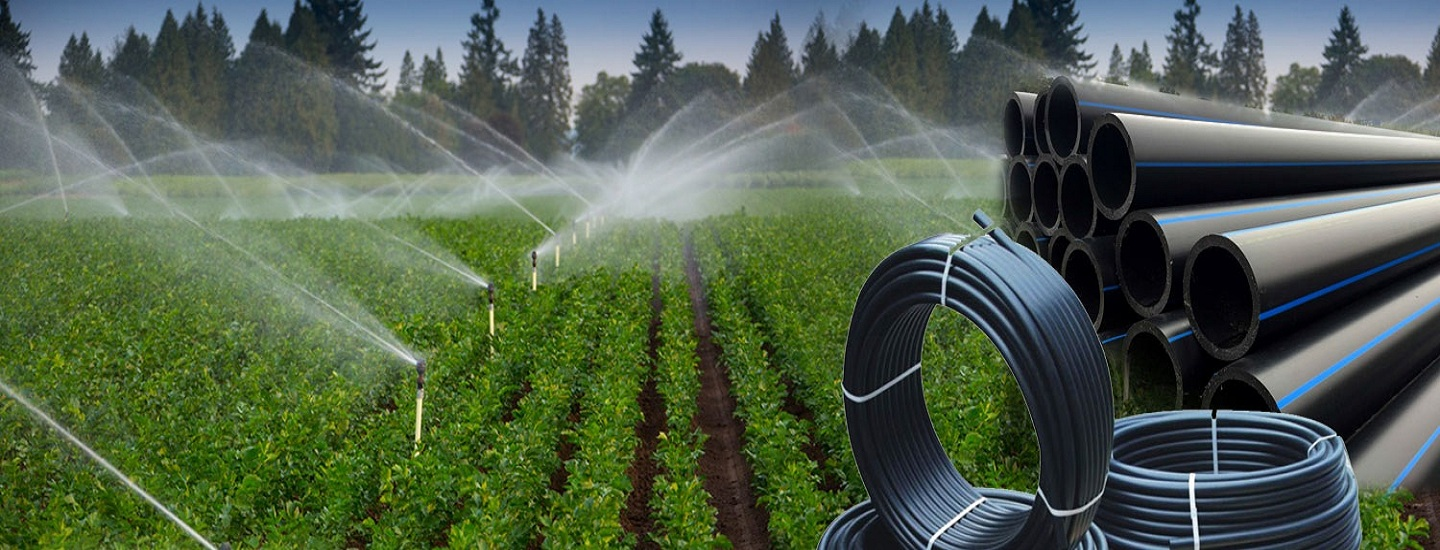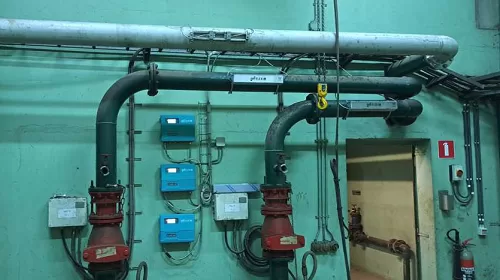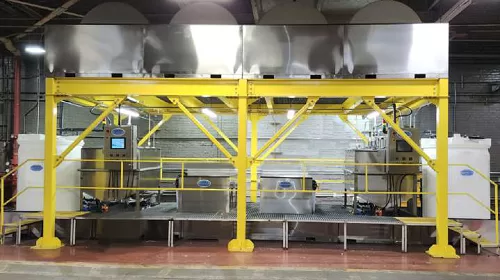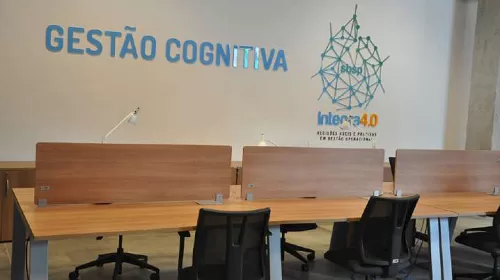By- Dilip Yewalekar Manisha Kinge
Glasgow, 10th Nov 2021, The UNEP, and Bharat signed an agreement on climate change and committed to achieving the target of SDG 6.3, and water conservation, energy conservation, environmental protection, and green energy are the task to achieve. Agriculture is the world’s largest consumer of water and power. To minimize the consumption of water and power in agriculture, use of TWW coupled with a solar-powered Rain-port plays an important role. TWW management and solar power(green energy) are the prime target of the UN’s Sustainable Development Goals (SDG 6.3) & environment protection (COP26), is explicit focuses on reducing water pollution, renewal energy, treatment of wastewater, and re-reuse for agriculture landscape, forestry, and gardens.
Use treated wastewater (TWW) for irrigation in small-scale agriculture, coupled with solar powered Rainport sprinkler system, is innovative and sustainable solution. This approach not only addresses water scarcity issues but also harness renewable energy for efficient irrigation. Here’s an outline of the key components and benefits along with case study and economics.
WWT
(WWT) Wastewater treatment means the removal of impurities from wastewater, before reaching aquifers or natural bodies of water such as rivers, lakes, and Oceans. Water pollution, therefore, is caused primarily by the drainage of contaminated wastewater into surface water or groundwater & agriculture-irrigation activity is one of the major causes of water pollution. ‘UNWWDR2017’ report said more than 80 percent of the world’s wastewater flows back into the environment without being treated and unfortunately proper data on wastewater treatment and reuse is not available at this stage. Some European Countries has made a significant contribution to wastewater treatment and reuse for agriculture, construction, and cleaning purpose.
Because of a lack of political will, technical know-how, R & D database, and mindset, this subject is least highlighted at national –international forums. Haryana & Punjab State Governments have started implementing the use of TWW for agriculture at a small scale and growers are also coming forward to use TWW for agriculture.
Key Components
- TWW system
- Establish a wastewater treatment system to purify water from various sources like sewage treatment plants or industrial effluents.
- Ensure that the treated water meets quality standard for agricultural irrigation.
- Storage Tank
Provision of storage tank to hold treated waste water (TWW), ensuring a consistent and reliable supply for irrigation.
- Solar Powered System
- Utilize solar panels to generate electricity for powering the irrigation system.
- Install a battery storage system to store excess energy for use during non-sunny periods.
- Rainport Sprinkler System
- Implement a Rainport Sprinkler System, which is low pressure, energy efficient irrigation technology.
- This system is designed for small landholders and uses pipes with small perforations to distribute water evenly over crops.
Rain-Port Sprinkler Irrigation (RPSI)
Rainport Sprinkler irrigation is an artificial stimulation of rainfall and water is sprayed through the air over a large surface area under pressure. The pressure is usually obtained by a solar powered motor pumpset or electrical motor pump set or Diesel Engine Pump set. Sprinklers are grouped as Micro/Mini Sprinkler, Overhead Sprinkler, Rain Gun Sprinkler called as Sprinkler family. The utility of each sprinkler varies with respective features, performance & cost-effectiveness.
A Rain-port Sprinkler Irrigation system is intermittent sprinkler irrigation, where the option to choose the droplet size of water particles with respect to nozzles is available as per the demand of crops.
RPSI system comprising of Solar Photovoltaic Module, Control Head Unit, Piping network, Driplines, Control Panel, and Motor Pump-set. Architect of Solar Powered Rainport Sprinkler System is displayed in Fig 1.
Fig.1. Architect of Solar Powered Rain-port Sprinkler Irrigation System.
Advantages
- Water Conservation
- TWW reduces dependence on freshwater sources, promoting sustainable water use.
- The Rainport Sprinkler System minimizes water wastage by delivering water directly to root zones of plants.
- Energy Efficiency
- Solar Power provides a clean and renewable energy source, reducing the environmental impact.
- The rainport sprinkler system operates at lower pressure requiring less energy compared to traditional high-pressure irrigation methods.
- Improved Crop Yield and Quality
- Consistent and Controlled irrigation leads to better crop growth and yield.
- The Rainport Sprinkler System ensures uniform water distribution, preventing overwatering or under watering of crops.
- Environmental Protection
- Using treated wastewater helps mitigate pollution by repurposing water that would otherwise be discarded.
- Solar power reduces reliance on fossil fuels, contributing to a lower carbon footprint.
- Cost Savings
- While the initial setup cost may be higher, the long term operational costs are reduced due to free solar energy and the efficient use of treated wastewater.
- Community Health
- Properly treated wastewater reduces the risk of water borne diseases, contributing to community health improvement.
- Regulatory Compliance
- Adhering to water quality standards for treated wastewater ensures compliance with environmental regulations.
Considerations
- Water Quality Monitoring
- Regularly monitor the quality of treated wastewater to ensure it meets the required standards for irrigation.
- Maintenance
- Regular maintenance of solar panels, rainport sprinkler system and other components is essential for optimal performance.
- Community Engagement
- Educate and involve local communities in the implementation and benefits of the system to ensure long term sustainability.
- Adaptability
- Design the system to be adaptable to different crops types and changing agricultural needs.
- Criteria for selection of Nozzle of Rain-port Sprinkler
- Nozzle should have a low discharge rate.
- Nozzle should have a larger diameter than the throw.
- Nozzle should have low operating pressure.
- Nozzle should have a higher CDU (more than 80%).
- Nozzle should be easy to replace.
- Nozzle should be cost-effective.
- Placement and overlapping of Rain-port Sprinkler
Based on the sprinkler precipitation profile, crop root spread, canopy, soil & slope of the ground, Rain-port Sprinklers preferred to be placed in a square fashion and from radius to radius as shown in figure 2. LLDPE Polytube of sizes 16 mm, 20 mm, 25 mm 32 mm, 40 mm, 50 mm & 63 mm is used as sprinkler laterals.
Considerations for Solar Power
Since solar radiation is available in a daytime for the generation of power, the entire irrigation to crops has to be concluded in a daytime most preferably. Obviously, all the design calculation is based on the fluctuation of solar radiation from morning to evening and season to season to meet the crop water demand. However, the following factors have to be considered and integrated while designing a Rain-port Sprinkler irrigation system.
- Average solar radiation- morning to evening on a monthly and seasonal basis.
- Optimization of ETcrop (Net Crop water demand) on a daily or alternate basis.
- Soil-based water retention capacity.
- Master plan of crops.
- Water availability and assessment to meet crop water demand.
- Operation/management of the system.
- Optimization of the requirement of motor-pump-set (solar-powered)
- Photovoltaic Solar Module.
- Average solar energy can be harvested to 200-300 watts/m2 in various countries based on latitude and longitude. It varies from season to season and mainly affects the clouds and haziness. Maximum solar power can be harvested in the summer season and minimum in rainy seasons due to cloudiness. Hence, the frequency of irrigation in the rainy season is low and maximum in summer. Similarly, in a daytime, solar energy is minimum in the morning, maximum at the noon, and again minimum during the evening. In figure 3, clearly show the solar power harvesting in a day, it is very clear that the design of Rain-port Sprinkler irrigation should be done to meet the water demand of crops in day time corresponding to available solar radiation only.
TWW Quality norms for agriculture
The success of (TWW) Treated Waste Water use for crop production largely depends on adopting appropriate strategies aimed at optimizing crop yields and quality, maintaining soil productivity, and safeguarding the environment. Several alternatives are available to use TWW for agriculture via various irrigation methods. The user should have prior information on TWW supply and its quality as per Table 1 for reference to ensure the formulation and adoption of an appropriate on-farm management strategy.
Table 1. TWW Quality Norms (Ref-PPCB)
| Sr | Parameters | TWW Standard Norms |
| 1. | Temperature | Not more than 50C. |
| 2. | pH | 5 – 9 |
| 3. | BoD | <= 10 ppm |
| 4. | COD | <= 50 ppm |
| 5. | TSS | <= 20 ppm |
| 6. | Sulfates | <= 200 ppm |
| 7. | TKN | <= 50 ppm |
| 8. | Faecal coliform | <= 100 MPN/100 ml |
| 9. | Total Phosphorus | <= 2 ppm |
| 10. | Ammonical Nitrogen | <= 20 ppm |
| 11. | SAR | <=3.5 ppm |
| 12. | EC | <=2000 micro siemens/cm |
| 13 | RSC | <= 2.5 meq/l |
Government Policy
Government policy on TWW available to farmers for unrestricted irrigation or to irrigate public parks and urban green areas is a deciding factor to promote the use of TWW at a large scale and to minimize the water stress and pollution of the environment. Instead of using TWW 100%, the option of blending TWW with other water supplies –canal water, groundwater etc. It is possible that a farmer may have saline groundwater and, if he has non-saline treated wastewater, could blend the two sources to obtain a blended water of acceptable salinity level.
Adopting a blending strategies of TWW is normally advantageous in respect of allowing greater flexibility, increased financial security and more efficient use of the wastewater throughout the year coupled with solar powered motor pumpset, whereas a single-use strategy will give rise to seasonal surpluses of effluent for unproductive disposal. A case study is highlighted in Table 2 along with photos graphs.
Table 2. Case study: Solar Powered Rainport Irrigation System for vegetable.
| Sr | Parameters | Value |
| 1. | Grower | CADA, Jhajjar, Sutanpur, Harayana. |
| 2. | Project (*) | Solar Powered Integrated Irrigation Project with STP water. |
| 3. | Capacity of STP | 8-13 MLD |
| 4. | Command Area | 1400 ac. |
| 5. | Design Discharge | 2.4-3.6 cusec per 1000 ac. |
| 6. | Crop | Green Chilly and others |
| 7. | Irrigation time | 4 to 7 hours depending on solar radiation available, crop water demand and agro-climatic conditions. |
| 8. | Irrigation type | Rainport Sprinkler Irrigation System. |
| 9. | Area | 1 acre representative area out of 1400 ac. |
| 10. | Yield | 12 Quintal |
| 11. | Market rate | Rs. 3,000 per Quintal. (year 2020-21) (Average assumed). |
| 12. | Total Income | Rs. 36,000.00 |
| 13. | Farm Expenses | Rs 22,000.00 (estimated). |
| 14. | Net Income | Rs. 23,000.00 |
| 15. | BC Ratio | 1.63 |
| Note: Details of of quality parameters of chilly, Taste, Smell not received. | ||





